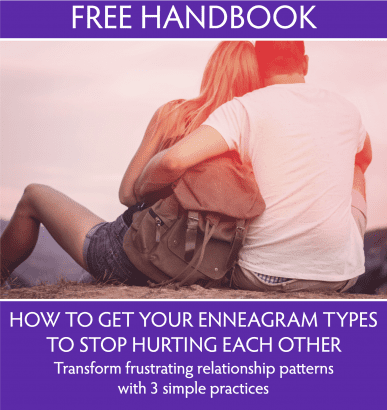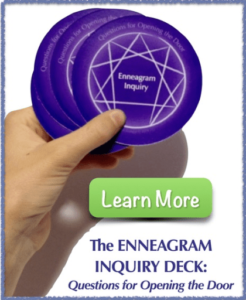Responding to Reactivity (Part 3 of 4)
“You’re pushing my buttons!”
Most of us hate the experience of having our buttons pushed. We can feel helpless, out of control, young, and desperate to stop whatever’s disturbing us. Someone else’s behavior is hijacking our preferred state of operating.
When we are “triggered,” when the proverbial issues that we’d rather keep hidden in a storage locker arise, we feel compelled to do something quickly to change the situation. This makes sense of course— who wants to sit in the unresolved material that makes us feel fragmented or unresourced?
The options that seem available to us in this kind of state are very limited. When we are triggered, typically all we feel we can do is defend, withdraw, manipulate, or confront. Our higher-order thinking is hard to access when the heart and body are in strong reaction. In fact, that’s how we’re wired— when something feels life-threatening or overwhelming, our instincts dominate to “save our lives” in the moment.
The trouble is, that more often than not, we are the ones pushing our own buttons. When your own paradigm becomes the hidden “enemy” in the moment, it’s hard to know where to place the shield or point the sword.
It is extremely tempting to believe that what others around us are doing is the problem. After all, when others are reactive and defended, they are annoying or difficult to be around. But it’s usually because our programs can’t readily tolerate what those others are presenting to us.
Reactivity Shuts Down Creativity
Reactivity can be dramatic and intense, or it can be subtle and seem like standard operations to us. Reactivity can activate strong expression or, alternately, little to no expression- such as in avoidance o withdrawal. In either case, our pain, fear, and defenses power up, and we don’t tend to think or act in a reflective or creative way.
I experienced a “hotter” than average reactivity for me the other day when cutting my son’s hair. Soren has significant developmental delays, has sensory issues, and is essentially non-verbal. Haircuts are usually a nightmare for both of us. He hates the sensations and fights each snip. I hate the feeling of forcing him, especially with dangerously sharp shears in my hand.
Because I knew this is typically an experience fraught with stress and frustration, I tried to set up the conditions ideally thinking of his biorhythms, gathering proper distractions, and meeting sensory needs. I was hopeful, feeling more ahead of the game than usual. Ha! He resisted me as much as ever.
I asked my older daughter to come over and help restrain his arms so I didn’t gouge him with the scissors. It helped a little. I persisted, getting a snip every fifth attempt or so. In certain moments where I was truly afraid I’d cut his ear or my thumb, I’d have to step away and growl, and then persist again in a state of agitation while trying to look calm.
This alerted my husband, who made a thoughtful suggestion that maybe the goal could be getting Soren used to a little bit at a time, rather than achieving the whole cut at once. This was intolerable for me to imagine after all the difficulty finding a time that could work, and with all the supportive conditions aligned. I vented as much at him, and while he looked disapproving, he didn’t persist.
In this state I didn’t want to become more reflective. I felt that backing off or starting differently would take me further from my goal. I was largely focused on the outer reality and what I was convinced was needed. Never mind that I was likely setting the stage for even worse future haircuts through my intensity and force.
Each enneatype actually finds a certain kind of comfort or relief in their preferred form of reactivity. When we’re troubled, it feels right and “natural” to automatically use the kind of response we’re used to.
When upset, the following types could tend to do the following:
- Ones may focus more effort on the “good,” become more disciplined.
- Twos may offer more help, support or flattery.
- Threes may become more efficient to accomplish more.
- Fours may seek more depth, express feelings more fully.
- Fives may detach more, seeking more space or understanding.
- Sixes may pursue more data, proof or certainty, preparing for the worst.
- Sevens may find more pleasurable possibilities, make more plans.
- Eights may become more protective or powerful, use more force.
- Nines may seek more harmony, diffusing the self more.
How We Respond is Essential
Once we can notice that we are triggered with our Inner Observer, how we respond to ourselves next makes all the difference.
A common unconscious response we have is agreeing with our inner reactions. As a Four, when I feel excluded or like I don’t belong, I am likely to feel there is something wrong with me. When I feel this, I believe it, and I start to have other thoughts and feelings in reaction to being wrong or rejected (anger, despair, longing, resolve, etc.).
Another common unconscious response is rejecting our inner reactions. As a Five, when I feel needy, I will likely want to stop that feeling as soon as possible. No one prefers to feel needy, but at Five, I’m particularly allergic to it. So, I’ll either block it out, or do something to conjure a feeling of resourcefulness, countering the feeling of need.
Rather than agreeing with or rejecting our reactivity, there is the option of meeting ourselves right there in it. What would it be like if you could accompany yourself through that tight and difficult spot?
Beginning with the non-judgmental stance of the Inner Observer, what if I could stay grounded in the present moment and notice my body sensations, my thoughts and emotions? What if I could be sweet to my poor old self for experiencing those classic buttons again? What if I could bring my presence in close, like that of a dear friend, abiding with all that is arising in me?
When our buttons are pushed, it is also common that we add an additional layer on top of the original reactivity: judgment. If I feel scared at Six, I might bark myself into being more brave or more prepared. If I feel rejected at Two, I might collapse into a feeling of inferiority and tell myself I’m pathetic.
Judgment is essentially more reactivity that comes up to try to manage something that feels difficult to tolerate or feels threatening to our program.
With my haircut scenario, I felt responsible to do something and helpless to do it in a way that felt good. As the pressure mounted, my desperation to make it happen was coming from my helplessness. I had a hard time tolerating this state, I wasn’t thinking flexibly about it, and I started to implicitly blame myself and my son for the dilemma.
The Way Out is Through
So while it can be hard not to identify with our reactivity, and while it can be tempting to want to hide, avoid, or transcend it, often the inner move that brings most support and relief is to turn toward it.
I need to be present with myself to do this, however. To turn toward our most activating terrain, it helps to make a conscious choice to be willing to go there. I can support myself in showing up for my process by sensing my body and breath, bringing my Inner Observer online, and opening my heart to myself.
In a present and grounded state, I can ask one or some of the following questions:
- May I notice what’s activated in me right now?
- May I notice how that shows up in my body, emotions, thoughts?
- May I accept that this is my experience right now?
- May I forgive myself for having this reactivity (again)?
- May I open my heart to whatever this is, trusting something is trying to work itself out?
- May I let this arise in me so it can go where it needs to go, so I can learn what I’m here to learn?
“May I” invites me to open and choose at the same time. But, sometimes the answer to any of the above questions will feel like “NO!” Let’s face it- when we’re reactive, we don’t usually feel gracious toward ourselves or others. And maybe it sounds noble to turn toward reactivity, but it can be quite hard.
So, how can we welcome our reactivity without “believing” its interpretation or conclusions? One thing is clear, we are very unlikely to be able to do so without the Inner Observer. Practicing mindfulness brings us to the door. I know for myself that it has been essential to have skilled others as guides in this process. My distress in such times can be too high to allow me to be a good coach to myself.
In his poem “Servant of Servants,” Robert Frost wrote:
He says the best way out is always through.
And I agree to that, or in so far
As that I can see no way out but through—
While it is in some ways noble or brave to turn toward ourselves, it is also the most practical and effective way to come back to center, to come back to our resourced sense of self. And maybe dodging or defying our experience doesn’t actually deliver us “out” in the end.
What helps you want to turn toward your difficult experiences?
Do you tend to bypass/dismiss or to indulge/identify with your reactivity?
Please share your experience below.
Part 1: Introduction – THREE KEYS FOR INNER WORK
Part 2: Cultivating Awareness
Part 3: Responding to Reactivity
Part 4: Getting Curious










7 Responses
With my husband and children I am more likely to indulge my reactivity, and in with less intimate friends, colleagues or family, I nearly always bypass my reactivity. I’m not sure exactly HOW I do this.
Thanks for sharing this. Since you’re aware of it, you might now be able to get more curious about it (see next blog post). It could be a great inquiry exercise to allow your wondering about HOW to lead you to uncover more.
This is a very interesting post. I definitely tend to indulge my way of reacting which is to withdraw. When I read down your list of questions to ask, the one that begins “May I open my heart…” brought up a welling of emotion for me and seems to be a very good one to use for deepening my experience of reactivity instead of avoiding. Thanks for these ideas.
Turning toward difficulty is like staring into the sun. You need the right pin hole camera to get a clear image of what is burning inside. Interestingly each of us needs a different shape filter. I think there are 9 archetypal styles of neutral density sun filters, looking forward to the next getting creative post! Let’s use the infared filter to see inside my personal sun! Interestingly it shows up as shades of gray? Why’s that?